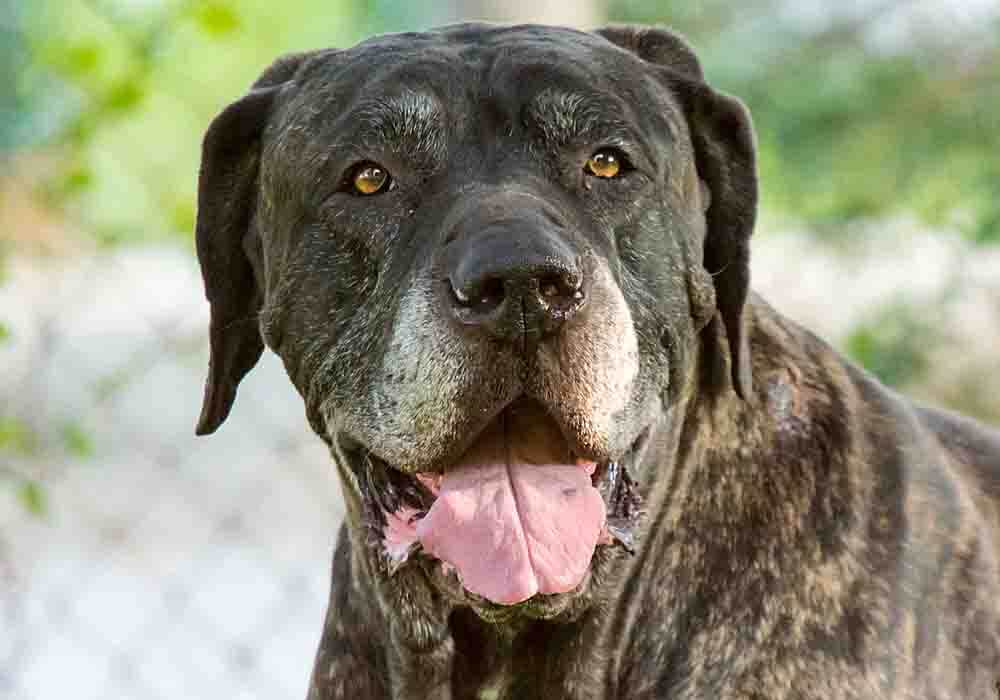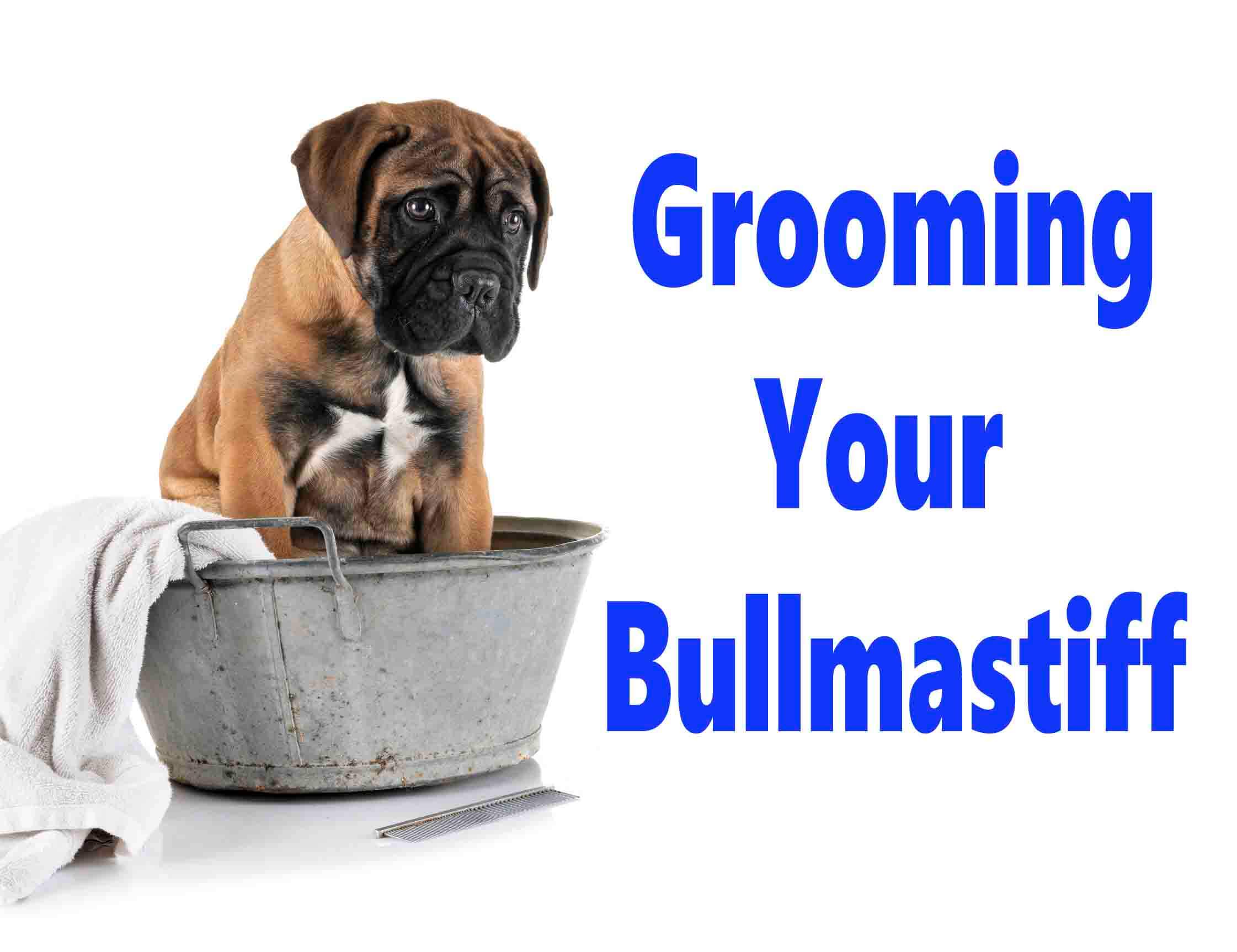Bullmastiff Common Health
Problems And Concerns
by Ken Alden
Bullmastiffs are 60% mastiff and 40% bulldog and were bred by 19th century gamekeepers to stop poachers on estates. These giant canines are known for being heavy-boned with a large wrinkled forehead and droopy ears to go with their droopy jowls. As with many large breeds, bullmastiffs require some extra care, especially because of these characteristic traits.
Bullmastiff Common Health Problems And Concerns...
Common health problems in Bullmastiffs include cancer and issues in their bones, skin, eyes, and intestines. They generally tend to present as bone and ligament issues due to their heavy-boned skeleton and skin problems due to their especially wrinkly skin.
Read on to learn more about a bullmastiff’s common health problems, how owners can reduce the chances their pet will suffer these ailments, and steps owners may want to consider to help offset costs associated with keeping their bullmastiff happy and healthy. Read More Below...
Disclaimer: The information in this article is neither medical advice nor intended to imply your bullmastiff will suffer from any of these issues. Every dog is different so it’s important to always consult your veterinarian for a professional diagnosis when your dog is ill or injured.
Pro-tip: Ever try lifting a Bullmastiff? Their weight can hurt not only your back but their joints when they hop down from cars, sofas or even your bed. To protect your back and theirs check out the best Mastiff ramps on Amazon.com now.

Orthopedic Issues in Bullmastiff
When it comes to Bullmastiff common health problems and concerns, because of their large size and dense bodies, orthopedic issues are not uncommon in bullmastiffs. Here are a few issues that may cause your bullmastiff to limp. Rest is your first best option, but you must visit your veterinarian if you are unsure or the limping continues or worsens. problems and concerns
- Hip Dysplasia can be both genetic and environmental. It results in a sudden limp in the rear legs. Essentially, the ball and socket that are the hip joint do not fit together properly, so instead of sliding together smoothly, the ball grinds against the socket, causing pain. If left untreated, it can eventually wear down the joint altogether.
- Elbow Dysplasia will cause front limping and may begin as early as five months old. Elbow dysplasia is inherited, and in the majority of cases, it affects both elbows. When this happens, the limp may be less noticeable since it is occurring on both sides. Instead, you may notice your dog becomes less willing to move around and especially be uninterested in going on walks.
- Cranial Cruciate Ligament Tears are common in larger breeds like bullmastiffs. This ligament inside the knee joint stabilizes the shin bone to keep it from moving in front of the thigh bone. In addition to limping, you may notice swelling in your dog’s knee joint.
- Osteoarthritis is a degenerative disease that large dogs like bullmastiffs are prone to suffer. If they suffer any of these other bone and skeleton issues, the likelihood of getting osteoarthritis in that joint increases.
- Wobbler Syndrome is a neurological disease causing compression on the spinal cord in the neck region and is most commonly seen in large breed dogs, particularly bullmastiffs who have large heads. This compression is painful, so pain medications, anti-inflammatories, and possibly surgery are the treatments. You want to avoid using a neck collar and leash.
Cancer in Bullmastiffs
While cancer is a leading cause of death in most older dogs, bullmastiffs can suffer from some early-onset cancers. They can be expensive to treat because they either require longer term medicines or surgical intervention. Primarily, these cancers are:
- Hemangiosarcoma presents in internal organs like the spleen. Unlike other cancers, this is one that almost exclusively affects canines. If the tumors have not spread, surgically removing them is a good option.
- Lymphoma which presents in the lymph nodes and is often treated with chemotherapy.
- Mast Cell Tumors present as growths on the skin. Like lymphoma, these are best treated by surgically removing them.
- Osteosarcoma is an aggressive bone cancer and maybe initially mistaken as dysplasia due to the limping it causes. This cancer can be very difficult to treat successfully.
Pro-tip: Bullmastiff anxiety, aggression, destructive chewing, jumping up, fearfulness, and other behaviors can be controlled with the right training program.
Here’s a great course that
addresses these issues along with many other dog training basics: Check it out now!
Skin and Eye Issues in Bullmastiffs
Because bullmastiffs were bred with bulldogs, not only are they sturdy and strong, but they also have lots of extra skin. This can lead to some common skin issues for your dog.
- Atopic Dermatitis is a fancy word for allergies, and in dogs, especially bullmastiffs, it causes them to itch- a lot. Given the extra skin on bullmastiffs, this breed suffers more from cases of atopic dermatitis and may end up with ear infections from their allergies.
- Entropion is when the eyelids roll inward and ectropion, where they roll outward, causing the eyelashes and skin around the eyes to rub against the cornea. With anything that causes constant friction, not only is this painful for the dog, but it can cause infections if left untreated.
Intestinal Challenges for Bullmastiffs
Larger breeds often have deep, narrow chests, and bullmastiffs certainly fit that description. While this allows their chest to take in lots of oxygen, giving them a very high cardiovascular capacity, it can also cause some unwanted issues, namely gastric dilatation and volvulus (GDV) or more commonly known as bloat. The deeper the chest, the more room the dog’s stomach has to move around. With bloat, the stomach actually turns inside out.
Learn more about bloat from this helpful article of ours.
This is life-threatening so getting to an emergency veterinary hospital right away is critical. Discuss with your vet if gastropexy may be an option to avoid this happening to your dog. In this procedure, the veterinarian will surgically tack the stomach down to not flip over on itself.
Below is a chart of some of the more common health issues for bullmastiffs and an estimated cost of the veterinarian fees you may be charged to diagnose and treat them. Keep in mind these fees are from a teaching hospital, so prices will likely be higher if you go to a privately owned veterinary hospital. And as expected, emergency procedures fees can be significantly higher.
Pro-tip: Bullmastiff's (and their owners) love dog crates…and for good reasons. Crates keep dogs from mischief while you're away, are perfect for house training, for traveling by car, and provide the dog a place to de-stress. Check out the best Mastiff crates on Amazon.com now.
Disease
Hip Dysplasia
Elbow Dysplasia
Dermatological
Bloat emergency
Eye
Wobbler Syndrome
General Risk Comparison with Smaller Breeds
Medium
Medium
High
High
Medium
High
Cost to
Diagnose and Treat
$1,700-$4,500 and up
$1,500-$4,000
$400
$1500 and up
$300
as much as $6000
Raising a Healthy Bullmastiff
Bringing a bullmastiff into your home is exciting, especially when you understand the characteristics and health considerations of this breed. Educating yourself on this can help you make the best first steps to increase your bullmastiff's chances of living a long and healthy life. bullmastiff common health problems and concerns
- Feed your puppy quality nutritious food made for puppies.
- Regularly brush your dog’s coat and clean the dog’s ears.
- Provide regular exercise. Because bullmastiffs are so large, walking is recommended over high impact running that can lead to overuse injuries and don’t start too early as that can result in musculoskeletal issues since puppies tendons and ligaments aren’t fully developed.
- Keep your dog at the proper weight. Being overweight for a very large dog can cause extra strain on already heavily stressed bones, joints, and muscles.
- Visit your veterinarian for routine check-ups and shots.
Should I Consider Health Insurance For My Bullmastiff?
Of course, there are no guarantees your dog will never get sick or injured and illness and injury can be both emotionally and financially difficult. Unfortunately, there is not much we can do to relieve the emotional pain, but there are ways to help reduce the financial burden by investing in pet insurance.
If you’re considering a bullmastiff, given their tendencies to suffer from certain health issues that can be expensive to treat, this is an option that may be worth investigation. In researching your choices, you may find a pet insurance comparison chart is a helpful tool especially to make note of any issues, ailments or genetic conditions that may not be covered.
Return to the top of this Bullmastiff Common Health Problems And Concerns page

About the Author...
Ken Alden, a dedicated Mastiff owner for over eight years, is acclaimed for his expertise in care, grooming, and training. Read more About Me and my dog Shadow.
- Mastiff Guide Home ›
- Bullmastiffs Dog Info ›
- Bullmastiff Common Health Problems And Concerns






